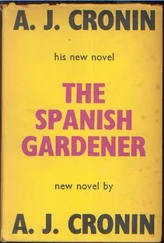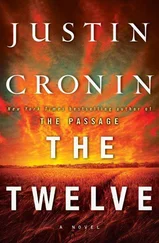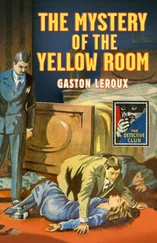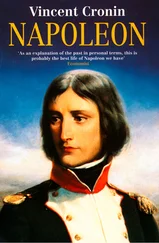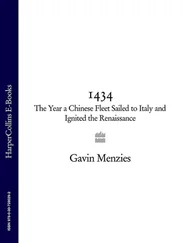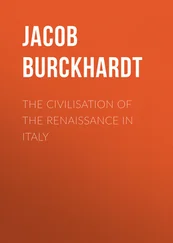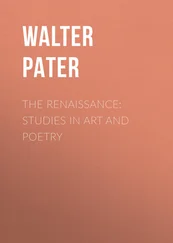1 ...8 9 10 12 13 14 ...21 ‘The dome of the Pantheon over the vault of the Temple of Peace’, is how Bramante described his concept of the new St Peter’s. Like the humanists of Florence, Bramante considered a centrally-planned church most suited to express the perfection of God, and his first design took the form of a Greek cross. However, in order to retain the tomb of St Peter under the dome—Julius would not hear of it being moved—he found that the arms of the cross would have to be shortened unduly. He then submitted a quite different project. Inside, it called for a traditional nave and aisles, outside for a portico entrance derived from the Pantheon, a dome marked with concentric rings like those on the Pantheon also, and four secondary domes at the intersection of the arms. While numerous towers gave the impression of complexity, unity was maintained by heavy cornices extending throughout on the same level.
Julius was not easy to please. He had already turned down plans by Sangallo and Rossellino. But he liked Bramante’s new design, approved it in October 1505, commissioned Caradosso to strike a medal depicting its elevation, and ordered work to begin. The soil was marshy, and workmen had to dig down 25 feet before striking solid tufa. On Low Sunday 1506 Julius climbed down to that level to bless and set in place the white marble foundation stone—twelve inches by six by one and a half—inscribed: ‘Pope Julius II of Liguria in the year 1506 restored this basilica, which had fallen into decay.’
Thereafter not a moment was lost. Julius proclaimed an indulgence within Italy in order to raise money for the cartloads of honey-coloured travertine which workmen carted from the Tivoli region, marble from Carrara, puzzolane from around Rome, lime from Montecello. Henry VIII sent tin for the roof and Julius, who knew his man, thanked him with barrels of wine and hundreds of Parmesan cheeses. Costabili of Ferrara wrote on 12 April 1507: ‘Today the Pope went to St Peter’s to inspect work. I was there too. The Pope brought Bramante with him, and said smilingly to me, “Bramante tells me that he has 2500 men on the job; one might hold a review of such an army.”’
A single misjudgmcnt marred the great undertaking. Bramante was so fervent a classicist that he found no beauty in Constantine’s basilica. He had the medieval candelabra, icons and mosaics destroyed, though fortunately Giotto’s Navicella escaped his workmen’s hammers. He earned the title of ‘ il Ruinante , and a lampoon pictures the architect arriving at the gates of heaven, where St Peter reproaches him with destroying his church and tells him to wait outside until it is rebuilt; Bramante coolly replies that he intends to spend his time replacing the narrow path to heaven by a well-paved Roman highway.
By the end of his reign Julius had spent 70,653 ducats on St Peter’s. Four great piers rose to the level of the dome and the arcades which were to bear the dome were partly finished. The walls of the projecting choir were also complete, and vaulting begun on the south transept. Building would continue through many reigns, and modifications would be made to Bramante’s designs, but to Julius must go the honour of having chosen so grand a plan and in a mere seven years carried the work so far.
It is difficult to believe that Julius crowded so much action and activity into a pontificate of less than, ten years. It was exhausting work for a man in his late sixties to launch out into so many new schemes, and in Raphael’s portrait, probably of 1512, the Pope’s eyes are downcast and tired, and his powers seem beginning to fail. In the following February he was prevented by illness from attending the fifth session of the Lateran Council. He lay in the room Raphael had decorated for him, close to the new Belvedere, close also to the Sistine Chapel. He could claim to have fulfilled his task of reasserting papal authority and proclaiming Christianity in contemporary terms through the techniques that had most advanced in his day: sculpture, painting and architecture. Indeed the new Christian Rome could now compare favourably with the classical, hence the title of Albertini’s little book, published in 1510: The Marvels of Modern and Ancient Rome. Only the great tomb was not ready. Julius left 10,000 ducats for its completion, and finally, thirty-one years later, in a much reduced form, it was to hold his mortal remains, not, as he would have liked, in St Peter’s, but in S. Pietro in Vincoli.
On 20 February 1513 Julius II died. He was described by the Florentine historian Guicciardini, no lover of the Papacy, as ‘worthier than any of his predecessors to be honoured and held in illustrious remembrance.’ The Romans agreed. ‘I have lived forty years in this city,’ wrote Paris de Grassis, his master of ceremonies, ‘but never yet have I seen such a vast throng at a Pope’s funeral. The guards could not control the crowds as they forced their way through to kiss the dead man’s feet…. Many even to whom the death of Julius might have been supposed welcome for various reasons burst into tears, declaring that this Pope had delivered them and Italy and Christendom from the yoke of the French barbarians.’
CHAPTER 3
After Caesar, Augustus
I HAVE THREE SONS,’ Lorenzo de’ Medici used to say, ‘one foolish, one good and one clever.’ The clever son was born in the Palazzo Medici on 11 December 1475 and christened Giovanni Romolo Damaso. He was ‘brought up in a library’—the phrase is his own—learning Latin and Greek from Poliziano, imbibing the broad-minded philosophical ideas of Pico and Ficino, laughing at Pulci’s burlesque Morgante , watching Michelangelo shape a block of marble in the Palazzo garden. Destined by Lorenzo for a career that would bring Florentine principles to the capital of Christendom, at seven he received minor orders, at twelve the abbey of Monte Cassino, at seventeen a Cardinal’s hat. He studied canon law at the University of Pisa but before he could graduate or learn theology Charles VIII rode in. With his ‘foolish’ brother Piero he was driven from Florence and spent an unhappy period wandering in Germany and France. In 1497 he returned to Rome and three times served as Legate, on the last occasion being captured by the French at the Battle of Ravenna. He was imprisoned in a pigeon-cote from which, however, he escaped hidden in a basket. He attended the conclave on a litter, suffering from an anal fistula, which between scrutinies his doctor lanced. In a long, commendably unsimoniacal election, during which the sacred college was reduced to a vegetable diet, he was chosen in preference to Raffaello Riario—whom Lorenzo had saved from lynching at the time of the Pazzi plot—mainly by the younger cardinals, who did not want a second nephew of Sixtus IV. He took his name in evident allusion to Leo the Great, who had kept the Hun from Rome—but by diplomacy, not arms. He was still in minor orders and was ordained priest four days after his election.
The new Pope was above middle height, broad-shouldered and portly. His head was set on a short neck, and the cheeks were puffy. He was short-sighted—hence the magnifying-glass in Raphael’s portrait, and his enemies’ quip: ‘Blind cardinals have chosen a blind Pope.’ He had shapely white hands and liked to show them off, as the fashion was, with diamond rings. He perspired easily and during long ceremonies would be seen mopping his face and hands. He also suffered from the cold, and in severe weather would wear gloves, even to say Mass.
Though he was not robust, Leo was a happy man who liked to make others happy. He was generous to a fault and whenever he could grant a favour did so. He had inherited Lorenzo’s easy, tactful manner, but not his daring. In politics, for instance, Leo moved cautiously—hence the nickname given him by Julius: ‘Your Circumspection’; and once when fire broke out in the Vatican his alarm was judged excessive. Otherwise he had plenty of self-control. He fasted twice a week, and his name was never associated with any woman. He took his religious duties seriously, said his office every day, and once, on ascending the Scala Sancta, was heard to beg God’s indulgence for not climbing it on bended knee like the poor women of Rome. As his papal motto he chose the first verse of Psalm 119: ‘Happy those who are irreproachable in their life, who walk in the way of the Lord.’ The linking of happiness and virtue is typical of the man.
Читать дальше

